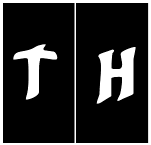|
Be the first user to complete this post
|
Add to List |
3. Determining the Right Number of Hidden Layers
Deciding on the number of hidden layers in a neural network, such as the one used in Deep Q-Learning for the Snake game, involves a balance between underfitting and overfitting, as well as computational considerations. Here are some guidelines to help you decide on the number of hidden layers:
1. Problem Complexity
- Simple Problems: For simple problems with low-dimensional input data and straightforward relationships, a neural network with 1 or 2 hidden layers may be sufficient.
- Complex Problems: More hidden layers may be needed to capture the underlying structure for more complex problems with high-dimensional input data and intricate patterns.
2. Empirical Testing
- Experimentation: Start with a small number of hidden layers (1 or 2) and gradually increase the number, monitoring performance on a validation set.
- Hyperparameter Tuning: Use hyperparameter tuning techniques such as grid or random search to find the optimal number of hidden layers and neurons per layer.
3. Avoiding Overfitting
- Regularization: More hidden layers can lead to overfitting, especially with limited training data. Techniques like dropout, L2 regularization, and early stopping can help mitigate overfitting.
- Cross-Validation: Use cross-validation to assess the model’s performance and generalization capability.
4. Computational Resources
- Training Time: More hidden layers increase the parameters, leading to longer training times. Ensure you have sufficient computational resources to handle the increased complexity.
- Inference Speed: If the model is to be deployed in a real-time setting, consider the inference speed and latency.
5. Domain Knowledge
- Insights from Literature: Review similar problems in the literature to get an idea of what architectures have been successful.
- Prior Experience: Use knowledge from previous projects or related domains to inform your decision.

